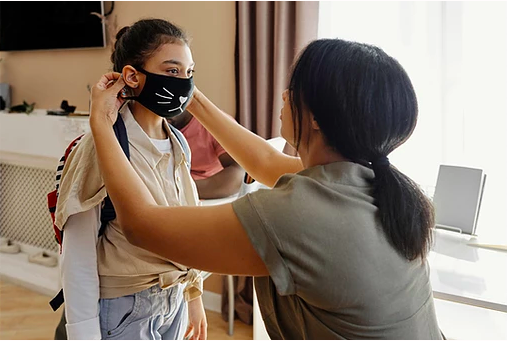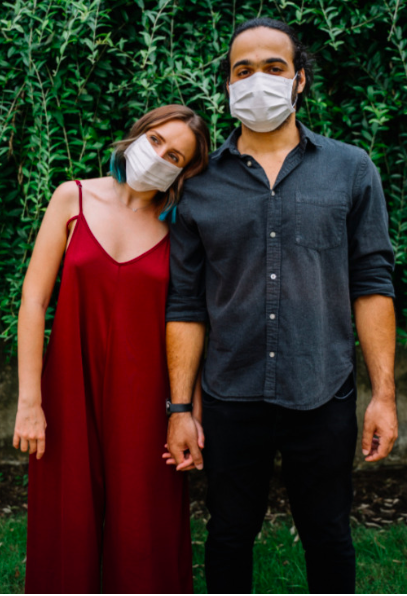Jill Katz
One to Zen Organizing
May 11, 2021
What is “Worried Well”?
When I was a new Mom, I would call the doctor at least once a week with a new question. I would call so often that, 17 years later, I still know the pediatrician’s phone number by heart. Every once in a while, that call would culminate in a doctor’s visit. On one such visit, the doctor needed to leave for a minute and he left his clipboard behind. Of course I took a peek, wouldn’t you? And what did I see written in big letters on the report: “WW (Worried Well).”

When I got home, I spoke with a doctor friend of mine and found out that worried well is actually a code doctors use for insurance when the patient, or parent, is worried but all is well. This code indicates that the patient is suffering from health anxiety with no underlying physical ailment. I asked my friend if too many “Worried Well”s would get me kicked out of the pediatric practice. She laughed and told me that pediatric offices understand that new parents need reassurance and that I was in the clear.
Increase in Worried Well Population

Fast forward to today. I subscribe to different online media about clutter, productivity and mental health and, for the first time in years, I saw that term again, “Worried Well”, in various articles. These articles divulged that COVID testing lines are becoming too long because they are full of “Worried Wells”. In other words, people are overly worried that they might have contracted COVID without any rational reason. These “Worried Wells'' are running to get tested because they need reassurance that they are OK.
These articles highlight how COVID has turned us all into a “Worried Well” population. The vast majority of us are on high anxiety alert. Our life has been upended and we are trying to find a sense of control and a return to stability during uncertain times.
Worried Well: What To Do When Anxiety Messes
With Your Productivity
When we are anxious we have trouble focusing and making decisions. Our productivity suffers and we can’t seem to organize our mental and physical spaces. Yet we need to continue to eat, work, and take care of ourselves and family members. Here are some tips on what to do when you are having a COVID anxiety:
Limit your news intake and use reliable media sources
I experienced 9-11 as a twenty something working in midtown Manhattan. I still remember watching TV with my husband from our Bronx apartment. The media coverage was nonstop and we watched for days. Finally, we realized that watching the news constantly was making us feel sick. So we turned it off. Today’s news presents even more challenges with social media, fake news, and partisan leaning reports. Limit your exposure to the media and try to search for unbiased reporting (I like The Flip Side).
Seek support from loved ones
 Now is the time to lean on our loved ones and friends. COVID might limit some activities but we can still chat or zoom with a friend or ask them to lend support with shopping or errands.
Now is the time to lean on our loved ones and friends. COVID might limit some activities but we can still chat or zoom with a friend or ask them to lend support with shopping or errands.
Put less on your plate
On anxiety-ridden days, we have a lower capacity. Limit your to-do list to three things. Delegate tasks and get takeout or give your kids peanut butter and jelly sandwiches for dinner. Settle for “good enough.”
Self care
I am sure you have heard the word “self care” about a million times since COVID hit. “Don’t forget about self care,” says everyone. That is because self care is really that important. Now that you are limiting your “To-do List” you can focus on getting enough sleep, eating nourishing food (nothing fancy, a simple salad or cut-up veggies or fruit will do), meditating and exercising.
Trust your instinct
 Don’t forget that “Worried Well” rests upon the foundation of anxiety without any real physical systems. If you are having trouble managing your anxiety, you should seek out a therapist or psychiatrist for help. If you are experiencing physical symptoms, see your doctor or a specialist. Get inspired to listen to your body by reading this woman’s story.
Don’t forget that “Worried Well” rests upon the foundation of anxiety without any real physical systems. If you are having trouble managing your anxiety, you should seek out a therapist or psychiatrist for help. If you are experiencing physical symptoms, see your doctor or a specialist. Get inspired to listen to your body by reading this woman’s story.
Create a routine
Unstructured days create anxiety for most people. And the pandemic has changed or destroyed our routines before March 2020. Building new routines are key to establishing a calm day. Create boundaries in your day for work, rest, mealtimes, socializing, exercising and other activities and hobbies.
In Conclusion
I made it through my “new mom worries” and I am optimistic that we will soon be viewing our pandemic worries in the rearview mirror. But as a population of “worried wells” we need to manage our anxiety in order to sustain ourselves so we emerge from the pandemic health, whole, and stronger than ever.
For more information, contact Jill Katz